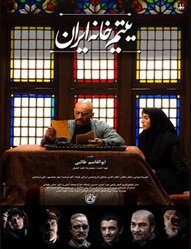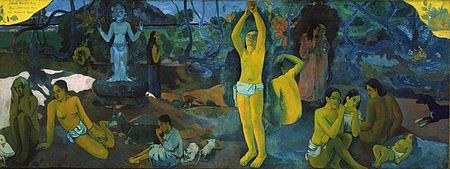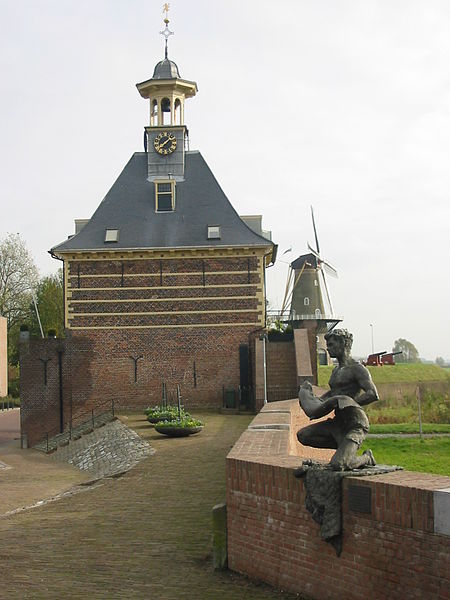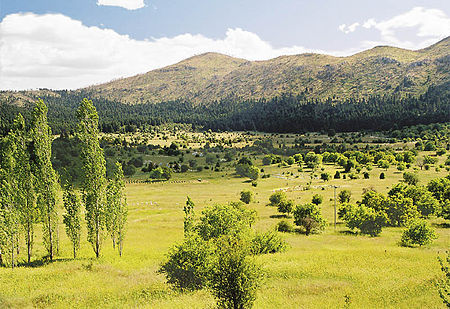Japanese cruiser Hashidate
| |||||||||||||||||||||||||||||||||||||||||||||
Read other articles:

Jennifer Johnston (Dublino, 12 gennaio 1930) è una scrittrice irlandese, vincitrice del Whitbread Book Awards per The Old Jest nel 1979, e selezionata per il Booker Prize nel 1977. The Old Jest, un romanzo sulla guerra di Indipendenza Irlandese, fu poi ridotto nel film The Dawning, con Anthony Hopkins, prodotto da Sarah Lawson e diretto da Robert Knights. Indice 1 Biografia 2 Riconoscimenti 3 Altri progetti 4 Collegamenti esterni Biografia Nata a Dublino dall'attrice e regista Shelah Richards e…

У этого термина существуют и другие значения, см. A4 (значения). Соотношение листа формата A4 и листов серии A других размеров A4 — формат бумаги, определённый стандартом ISO 216, основан на метрической системе мер. Его размеры — 210×297 мм, диагональ — 364 мм. Площадь листа фор…

哥伦比亚大学的「智慧女神雕像」 母校(拉丁語:alma mater,英式英語發音:/ˈɑːlmə ˈmɑːtər/、美式英語發音:/ˈælmə ˈmeɪtər/),源自拉丁語,本意「母親的哺乳」,詞源與校歌相通,是一個使用於古羅馬各式地母神的頭銜,特別是刻瑞斯或者西芭莉(希臘神話),亦使用於中世紀基督教的聖母瑪利亞。 位於義大利的博洛尼亚大学於1988年,430位大学校长在大學著名的大广�…

Province of Bulgaria Province in BulgariaRuse Province Област РусеProvinceView of Cherven Fortress FlagLocation of Ruse Province in BulgariaCountryBulgariaCapitalRuseMunicipalities8Government • GovernorStefko BurdzhievArea[1] • Total2,803.4 km2 (1,082.4 sq mi)Population (December 2022)[2] • Total189,623 • Density68/km2 (180/sq mi)Time zoneUTC+2 (EET) • Summer (DST)UTC+3 (EEST)License pl…

2016 Iranian filmThe Orphanage of IranDirected byAbolqasem TalebiWritten byAbolqasem TalebiBased onThe Great Famine and Genocide in Persiaby Mohammad Gholi Majd[1]Produced byMohammad Reza TakhtkeshianStarring Alirum Nouraei Jafar Dehghan Farrokh Nemati Anoushirvan Arjmand Bahar Mohammadpour Dariush Asadzadeh Ali Shadman Alireza Jalili (actor) Iman Safa Mohsen Hosseini Akbar Beheshti Davood Meghdadi Majid Mafi Shahram Teimourian Melika Shaaban Mehri Aleagha Ghotbeddin Sadeghi Cinematograp…

American politician For the American physician, see John H. Foster (physician). John H. FosterMember of the U.S. House of Representativesfrom Indiana's 1st districtIn officeMay 16, 1905 – March 3, 1909Preceded byJames A. HemenwaySucceeded byJohn W. BoehneMember of the Indiana House of RepresentativesIn office1893 Personal detailsBornJohn Hopkins Foster(1862-01-31)January 31, 1862Evansville, IndianaDiedSeptember 5, 1917(1917-09-05) (aged 55)Evansville, IndianaPolitical…

Частина серії проФілософіяLeft to right: Plato, Kant, Nietzsche, Buddha, Confucius, AverroesПлатонКантНіцшеБуддаКонфуційАверроес Філософи Епістемологи Естетики Етики Логіки Метафізики Соціально-політичні філософи Традиції Аналітична Арістотелівська Африканська Близькосхідна іранська Буддійсь…

CasoriaKomuneComune di CasoriaLokasi Casoria di Provinsi NapoliNegaraItaliaWilayah CampaniaProvinsiNapoli (NA)Luas[1] • Total12,13 km2 (4,68 sq mi)Ketinggian[2]70 m (230 ft)Populasi (2016)[3] • Total78.647 • Kepadatan6,500/km2 (17,000/sq mi)Zona waktuUTC+1 (CET) • Musim panas (DST)UTC+2 (CEST)Kode pos80026Kode area telepon081Situs webhttp://www.comune.casoria.na.it Casoria adalah sebuah kot…

GorinchemMunicipality BenderaLambang kebesaranCountryBelandaProvinceHolland SelatanLuas(2006) • Total21,99 km2 (849 sq mi) • Luas daratan18,96 km2 (732 sq mi) • Luas perairan3,03 km2 (117 sq mi)Populasi (1 January, 2007) • Total34.282 • Kepadatan1.808/km2 (4,680/sq mi) Source: CBS, Statline.Zona waktuUTC+1 (CET) • Musim panas (DST)UTC+2 (CEST)Situs webwww.gorinchem.…

2020 civil unrest after the murder of George Floyd For broader coverage of this topic, see George Floyd protests and Protests in Portland, Oregon. For related protests in Portland, Maine, see George Floyd protests in Maine § Portland. George Floyd protests in Portland, OregonPart of the 2020–2023 United States racial unrest, the Black Lives Matter movement, the George Floyd protests in Oregon, and the George Floyd protestsProtesters surround the perimeter fence of the Hatfield United Sta…

Traditional peninsular region in Greece This article is about the peninsula and the traditional geographic region. For the modern administrative region, see Peloponnese (region). Traditional region in GreecePeloponnese ΠελοπόννησοςTraditional regionPeloponnese (blue) within GreeceCountry GreeceAdministrative regionsPeloponnese (region)Western Greece (in part)CapitalTripoliLargest cityPatraArea • Total21,549.6 km2 (8,320.3 sq mi)Population (2011)&#…

2017 European Athletics U23 ChampionshipsTrack events100 mmenwomen200 mmenwomen400 mmenwomen800 mmenwomen1500 mmenwomen5000 mmenwomen10,000 mmenwomen100 m hurdleswomen110 m hurdlesmen400 m hurdlesmenwomen3000 msteeplechasemenwomen4 × 100 m relaymenwomen4 × 400 m relaymenwomenRoad events20 km walkmenwomenField eventsHigh jumpmenwomenPole vaultmenwomenLong jumpmenwomenTriple jumpmenwomenShot putmenwomenDiscus throwmenwomenHammer throwmenwomenJavelin throwmenwomenCombined eventsHeptathlonwomenDec…

Overview of the transport in New Zealand Highways, rail lines and an inter-island ferry in central Wellington Transport in New Zealand, with its mountainous topography and a relatively small population mostly located near its long coastline, has always faced many challenges. Before Europeans arrived, Māori either walked or used watercraft on rivers or along the coasts. Later on, European shipping and railways revolutionised the way of transporting goods and people, before being themselves overt…

Largest city in Pennsylvania, United States Philly redirects here. For other uses, see Philly (disambiguation) and Philadelphia (disambiguation). Consolidated city-county in the United StatesPhiladelphiaConsolidated city-countySkyline of Center CityIndependence National Historical ParkPhiladelphia City HallUniversity of PennsylvaniaElfreth's AlleyPhiladelphia Museum of Art FlagSealLogoEtymology: Ancient Greek: φίλος phílos (beloved, dear) and ἀδελφός adelphós (brother, brotherly)�…

Anguish in response to ecological loss After a Blue Origin spaceflight It was among the strongest feelings of grief I have ever encountered. The contrast between the vicious coldness of space and the warm nurturing of Earth below filled me with overwhelming sadness. Every day, we are confronted with the knowledge of further destruction of Earth at our hands: the extinction of animal species, of flora and fauna... things that took five billion years to evolve, and s…

One Sweet DaySingel oleh Mariah Carey dan Boyz II Mendari album DaydreamArti judulSuatu Saat NantiSisi-BOpen ArmsDirilis14 November 1995 (1995-11-14)Format 7 inci 12 inci CD maxi kaset DirekamFebruari 1995GenreR&BDurasi4:42LabelColumbiaPencipta Mariah Carey Walter Afanasieff Nathan Morris Michael McCary Shawn Stockman Wanya Morris Produser Mariah Carey Walter Afanasieff Kronologi singel Mariah Carey Fantasy (1995) One Sweet Day (1995) Open Arms (1995) Kronologi singel Boyz II …

Lili paris Chlorophytum comosum 'Vittatum' cultivarTaksonomiSuperkerajaanEukaryotaKerajaanPlantaeDivisiTracheophytaOrdoAsparagalesFamiliAsparagaceaeGenusChlorophytumSpesiesChlorophytum comosum Jacques, 1862 Tata namaBasionimAnthericum comosum (en) Sinonim takson Anthericum comosum Thunb. Hartwegia comosa (Thunb.) Nees Chlorophytum comosum, biasanya disebut tanaman laba-laba atau lili paris adalah spesies tanaman berbunga abadi hijau dari keluarga Asparagaceae . Ini berasal dari Afrika tropi…

منزل المهيري الإحداثيات 35°25′28″N 9°51′08″E / 35.42444444°N 9.85222222°E / 35.42444444; 9.85222222 تقسيم إداري البلد تونس التقسيم الأعلى ولاية القيروان تعديل مصدري - تعديل مَنْزِل المهِيرِي إحدى مدن الجمهورية التونسية، تقع في ولاية القيروان، على بعد 40 كم جنوب مدينة الق…

Map projection This article has multiple issues. Please help improve it or discuss these issues on the talk page. (Learn how and when to remove these template messages) This article provides insufficient context for those unfamiliar with the subject. Please help improve the article by providing more context for the reader. (February 2019) (Learn how and when to remove this message) This article relies largely or entirely on a single source. Relevant discussion may be found on the talk page. Plea…

Artikel ini bukan mengenai Joko Tingkir. Joko TingkirGenre Drama Laga Sejarah PembuatMD EntertainmentDitulis olehNur RahmawatiSkenarioNur RahmawatiSutradaraFerry SetiawanPemeran Andryan Bima David Chalik Akbar Kurniawan Attar Syah Arthur Tobing Adam Jordan Penggubah lagu temaNNLagu pembukaJoko TingkirLagu penutupJoko TingkirNegara asalIndonesiaBahasa asliBahasa IndonesiaJmlh. musim2Jmlh. episode36ProduksiProduser eksekutifShania PunjabiProduser Dhamoo Punjabi Manoj Punjabi Pengaturan kameraMulti…


